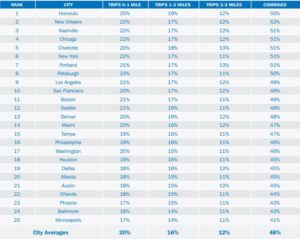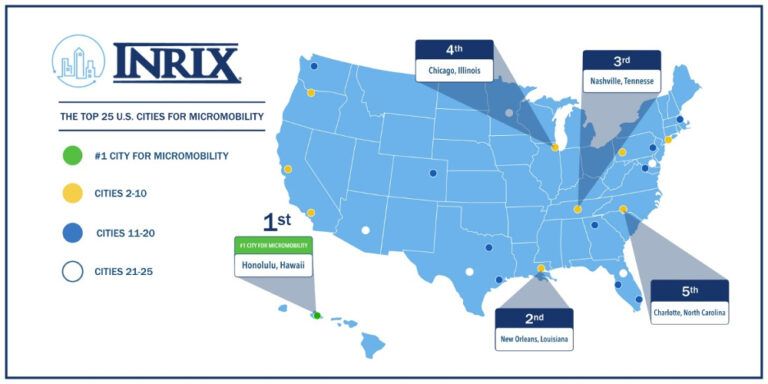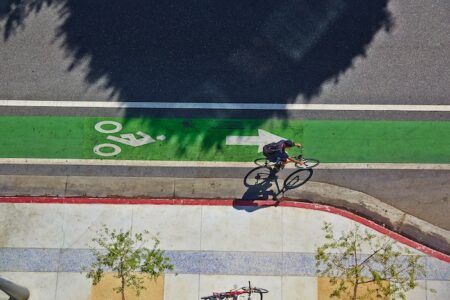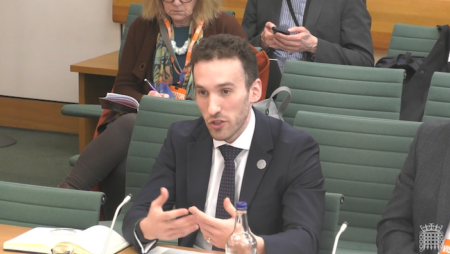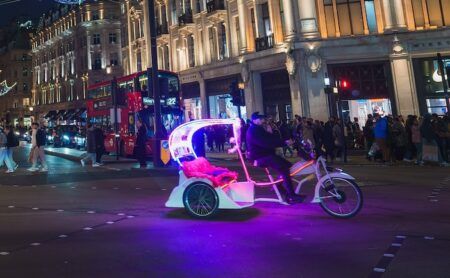Connected car services and transportation analytics firm, Inrix, has released a new report that shows the top USA, UK and German cities where micromobility has the most potential as a short-range transportation option.
Defined as the use of shared bikes, e-bikes and e-scooters, the report says micromobility has the potential to deliver substantial benefits to consumers and businesses around the world, including efficient and cost-effective travel, reduced traffic congestion, decreased, emissions and a boost to the local economy. According to the National Association of City Transportation Officials’ (NACTO) trip distance estimates, scooters are frequently used for trips between a half-mile and a mile, whereas bike distances are typically between one mile and three miles. Analyzing more than 50 million anonymous car trips, Inrix’s research found that 48% of all car trips in the most congested metropolitan areas of the USA are less than three miles (20% > 1 mile, 16% 1-2 miles and 12% 2-3 miles). If a fraction of these vehicle trips were replaced with scooter and bike trips, the USA’s cities could reap significant benefits.
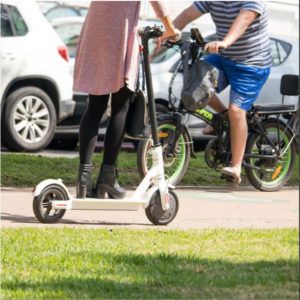 Analyzing trillions of anonymous data points from hundreds of millions of connected devices, Inrix ranked the top USA, UK and German cities where micromobility services have the most potential to reduce vehicle trips.
Analyzing trillions of anonymous data points from hundreds of millions of connected devices, Inrix ranked the top USA, UK and German cities where micromobility services have the most potential to reduce vehicle trips.
- In the USA, Honolulu (Hawaii), New Orleans (Louisiana), and Nashville (Tennessee) comprise the Top 3 cities with the greatest profile for micromobility to succeed and reduce vehicle trips. These cities also feature warm climates with minimal topographic variation, providing further support for micromobility. Chicago (Illinois) and Charlotte (North Carolina) complete the USA’s top five cites.
- UK analysis reveals a much higher proportion of short-distance vehicle trips compared to cities in the USA, which is attributable to higher density levels than typically seen in the US, as UK drivers have shorter distances to travel to find the same goods. The pattern of land use makes British cities, on average, more appealing for micromobility solutions due to the greater opportunity for car trip displacement. In total 19% more of vehicle trips in the UK are less than 3 miles compared to the USA. The UK’ s most suitable ‘micromobile’ cites are Manchester, Birmingham, Glasgow, London, and Sheffield.
- From the nearly 25 million trips observed in Germany, Inrix research found the proportion of short-distance trips fall between those of the UK and the USA with 58% of trips being under 3 miles. This is attributable to city population densities that are greater than those typically found in the USA, but less than those in the UK. The top German cities are Munich, Hamburg, Berlin, Frankfurt and Cologne.
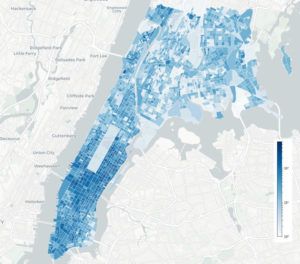 To demonstrate a city’s potential benefit for shared micromobility, Inrix analyzed and constructed heat maps to score and visualize results for New York City. This showed that Micromobility-as-a-Service (MMaaS) could provide a valuable alternative to driving in lower transit service areas and increase the catchment area for existing stations, with shared micromobility services able to provide critical first- and last-mile connections to neighborhoods throughout the city. The study concluded that micromobility could have a promising future by replacing short distance vehicle trips and relieving the pressure on urban road networks.
To demonstrate a city’s potential benefit for shared micromobility, Inrix analyzed and constructed heat maps to score and visualize results for New York City. This showed that Micromobility-as-a-Service (MMaaS) could provide a valuable alternative to driving in lower transit service areas and increase the catchment area for existing stations, with shared micromobility services able to provide critical first- and last-mile connections to neighborhoods throughout the city. The study concluded that micromobility could have a promising future by replacing short distance vehicle trips and relieving the pressure on urban road networks.